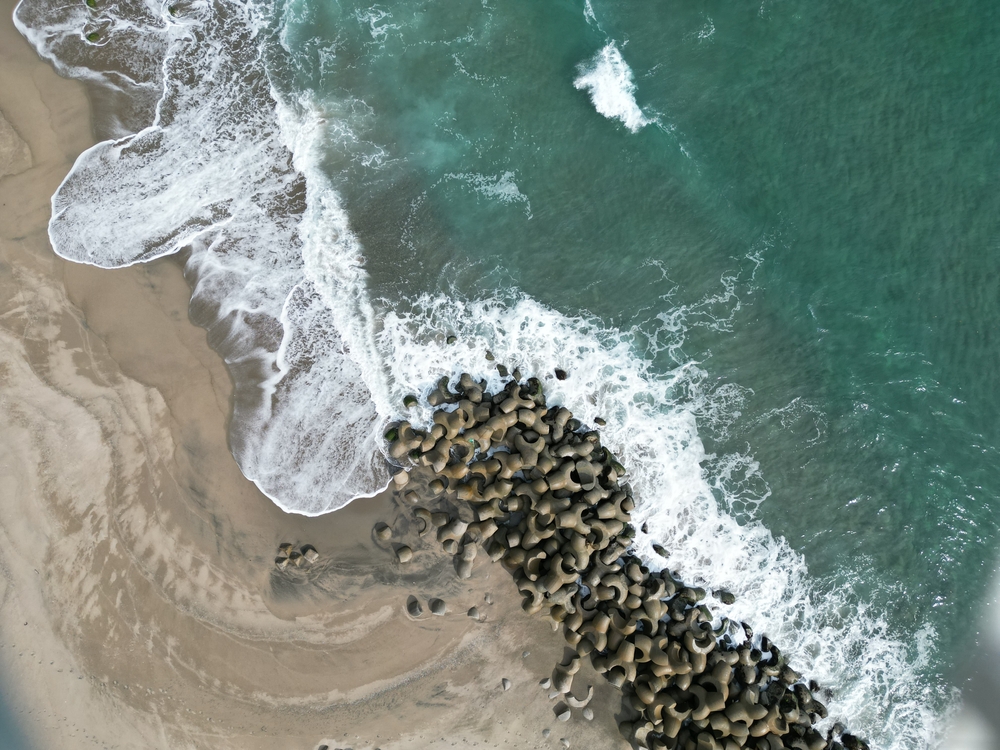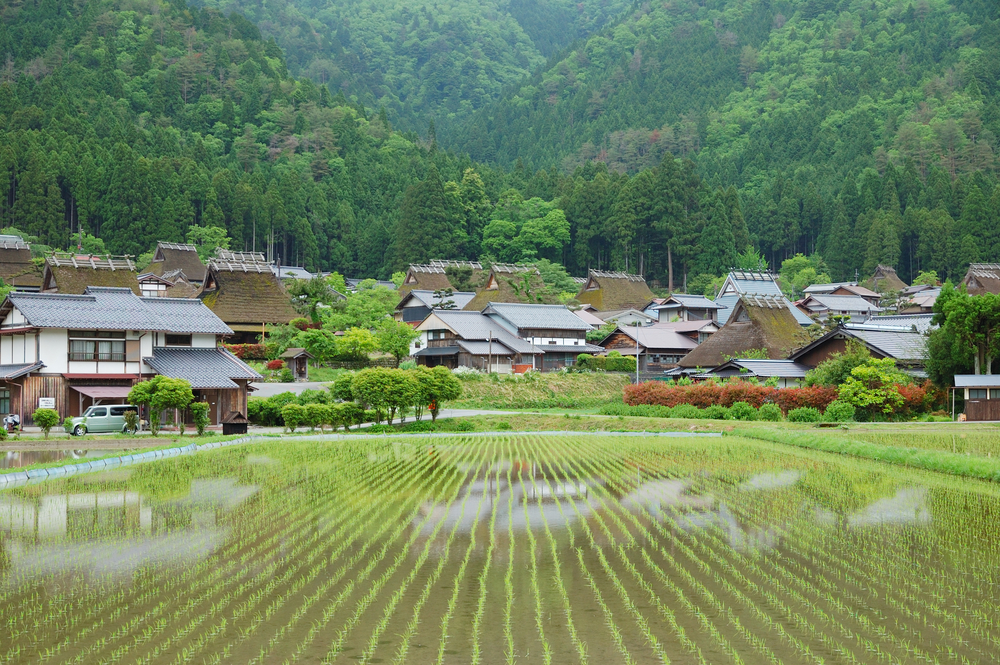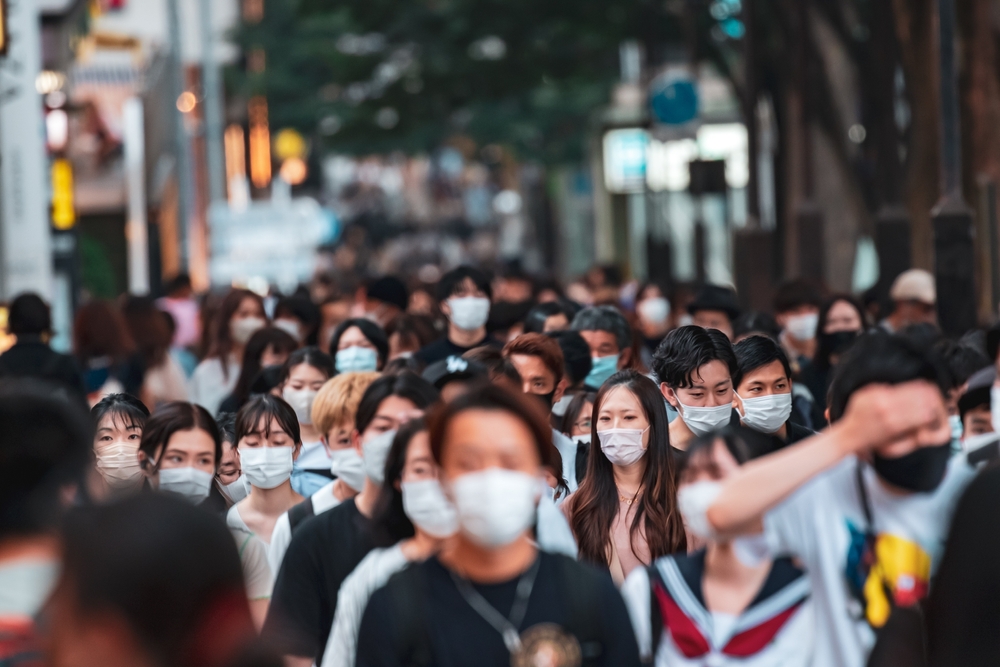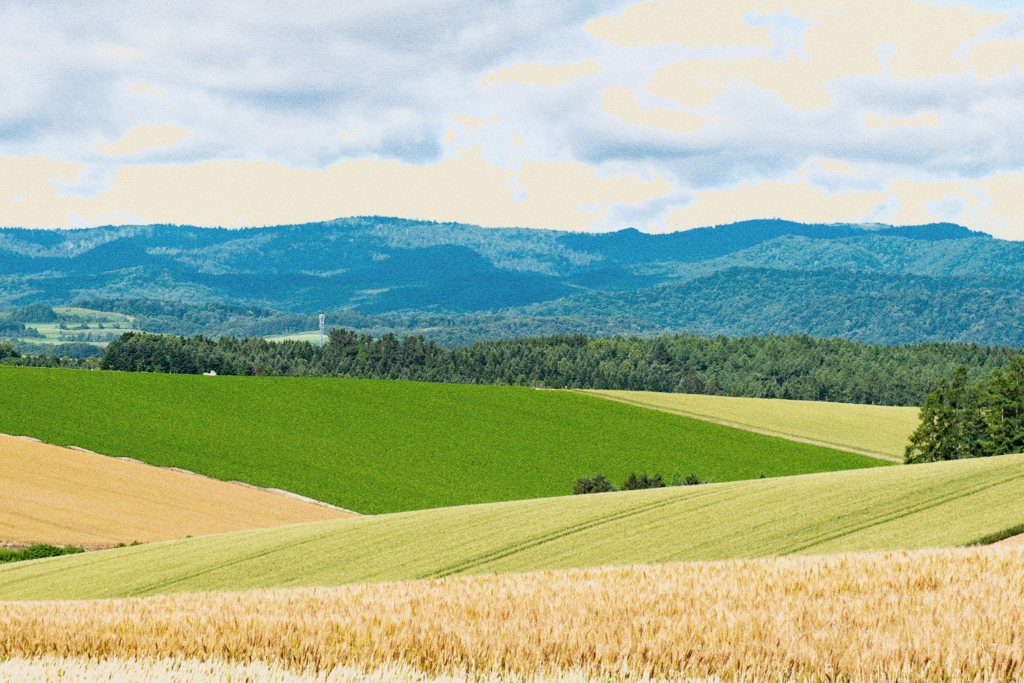Surveying a riverbed in a small town at the foot of Japan’s snow-fanged Northern Alps, my guide for the day told me Nagano Prefecture “is home to many beautiful rivers.” I presumed he wasn’t talking about this one, with its concrete embankments, weed-filled channel and an upstream dam that had reduced its flow to a line of spittle, like saliva dribbling down a drunkard’s chin.
Iya Valley ought to be magnificent, too: all plunging gorges festooned with vine bridges, blanketed by rolling seas of cloud come dawn. That is, if one can extract one’s gaze from the telephone poles piercing sacred summits like giant middle fingers to the nation’s past and the tree-choked hillsides pockmarked with identical thickets of industrial cedar.
Next, head to the Sea of Japan coastline, where you’ll find concrete tetrapods darting seaward in every direction, their constructors in a race to the edge of the earth. Adjacent beaches seldom offer a reprieve. I have a theory that Japan appears so clean because each town deposits its commercial detritus along the nearest available shoreline.

Readers of Alex Kerr’s Dogs and Demons will be familiar with the concept of “The Construction State,” whereby postwar ministerial meddling and an influx of cash into pork-barrel construction projects turned much of Japan’s countryside into exhibitions of “state-sponsored vandalism.”
It’s a topic worth revisiting in light of the government’s latest incentive to get people to flee the capital. It recently announced plans to offer families ¥1 million per child if they move from the Tokyo metropolitan area — where the population has increased 16 percent in the last two decades, despite an overall decline — to “unfashionable” parts of the country. Around 1,300 municipalities are involved in the scheme which stipulates that Tokyo emigrees must remain in their new hometown for at least five years, start a business or join a small-to-midsized company there, or continue working remotely for a Tokyo-based employer. If the conditions aren’t met, the cash incentive will be denied or revoked.
The government hopes to revitalize countryside areas that, aside from receiving an aesthetic pummeling over the past several decades, have also suffered from brain drain to the major cities, diminishing employment and education opportunities, and ghost villages where any remaining inhabitants have since died out.
A secondary aim of the initiative is to combat overcrowding in the Greater Tokyo Area by encouraging up to 10,000 of the 35-plus million population to move by 2027. That’s 0.03 percent of the population over five years, which is like trying to free up space in a saltshaker by removing a single granule.
The real issue here is that there are manifold reasons why Japan’s countryside and less-charted regions have become increasingly deserted and undesirable places to live.

Tokyo is home to around a quarter of Japan’s tertiary education institutions and around a third of all its university students. When coming-of-age teens get a taste of life in one of the world’s greatest cities and study in the knowledge that a degree from Keio or Waseda equals guaranteed employment thereafter, there’s little reason to relocate.
Why forgo the pulsating nightlife of Shibuya and Shinjuku, the hipster subcultures of Harajuku and Shimokitazawa, the cosmopolitan air of Daikanyama and Ebisu, the raucous yokocho of Kitasenju and Kichijoji, and a gold-standard transport network to connect them all? Rural alternatives, such as working in agriculture, construction or an often-seasonal tourism industry, which has thus far failed to effectively divert most travelers from the well-beaten Golden Route, pale in comparison.
To say that the problem is exclusive to the countryside is, however, misleading. Small cities have suffered from ugly, repetitive design; civil engineers who’ve prioritized vehicles over foot traffic; and corporate oligopolization. This has rendered many regional differences, for which the Japanese are rightly proud, all but obsolete.
Exit the station in most minor urban centers in Japan and you will be hard pushed to distinguish where you are. You’ll be greeted, on a raised walking platform or similar, by those grey toilet-tile buildings filled with convenience stores, family restaurants, APA Hotels, Hard-Offs, and if you’re lucky, a Starbucks and a Don Quijote. You’d be forgiven for wanting to rent a car and start hightailing out of there on the nearest highway, only to whizz past the merry-go-round of car dealerships, petrol stations and Americana-style diners indicative of modern Japan’s countryside. By the time you reach the rice paddies, you’ll just have to hope they’re not brooded over by a rusted, smog-belching factory, a series of towering pylons or other such eyesores.
The densely populated city belt running from Tokyo down through Nagoya and onto the Osaka-Kyoto-Kobe conurbation is among the worst offenders; a 300-mile expanse of startling banality, with towns and villages whose main selling point is that they might be close to a station on the Shinkansen route.

Photo by KenSoftTH via Shutterstock
This may seem harsh, but the problem, as I see it, is largely down to government mismanagement. Attempts to decentralize, going back to the early 1900s, have largely failed as Tokyo’s position as the country’s political, cultural and economic powerhouse has remained resolute. The government has, meanwhile, encouraged nature’s defilement in order to line the pockets of omnipresent and anonymous bureaucrats, leaving once-stunning stretches of the country mere characterless extensions of the cities.
Japan’s countryside is evidently dying. If current trends continue, by 2040 as many as 869 municipalities could vanish. If the government had made serious efforts to make regions beyond the capital, and other major cities, more appealing and prosperous, the citizenry would have genuine reasons to relocate. It’s not just that the new plan seems destined for failure, but that it’s come far too late.









